A & M Records (Original Charlie Chaplin Studio)
1918
1416 North La Brea Avenue – map
Declared: 2/5/69
I’d bet if you ask aficionados of silent comedies who their favorite comedian is, most would say Keaton, Lloyd, or Stan and Ollie. For some reason, Charlie Chaplin hasn’t held up as well. However, back in the day, Charlie was the real superstar. In fact, quite possibly, Charlie Chaplin was the most popular celebrity. Ever.
When Chaplin struck out on his own as an independent producer in 1917, leaving Mutual for First National, he built his very own studio, one of the earliest in Hollywood.
Now, there are a lot of discrepancies out there regarding the Chaplin Studio. The first revolves around the adjacent property to the north. Some reference material say Charlie built the studio behind his home at the corner of Sunset and La Brea, other sources say the home was owned by his brother/business partner, Sydney. It could also be that C.C. first bought the land which included the home, into which he or Sydney moved afterwards. If you know, let me know. In any event, on the homestead site today is a store selling DVDs – cheap!
As far as the studio’s opening is concerned, the year 1919 is cited by many sources (including the Cultural Heritage Commission), but it’s fairly established that construction commenced in 1917, with the official opening happening on January 21, 1918. This site, part of TheLittleFellow.org, goes on to quote a Daily Mirror article from December 15, 1917, saying “The final lap of construction of the Charlie Chaplin motion picture plant, in Hollywood, Cal., was reached this week, when foundations on the last group of buildings were laid.” It went on to say the entire plant would be completed within three weeks.
To boot, a Los Angeles Times article reports on D.W. Griffith’s plans to build a new studio in Hollywood “… located near that of Charlie Chaplin, at La Brea and De Longpre avenues”. That was on November 9, 1917.
The buildings – at least the ones fronting La Brea Boulevard – are mainly in the Tudor style, and they resemble a little stretch of English village, partly. More or less.
Chaplin’s greatest work was produced on the lot, including The Gold Rush, The Circus, City Lights, Modern Times, and The Great Dictator. The first film shot here was the three-reeler “A Dog’s Life”, the last was Limelight in 1952, when Charlie split the U.S.A. for (almost) good.
Chaplin sold the studio in 1953. Here’s a bit lifted word for word from Cobbles.com:
He sold the studio in 1953, to a New York real estate firm William Zeckendorf's Webb & Knapp for $650,000. The plan was to tear down the studio, but instead it was leased out to a Chicago television production company. The lot became known as the Kling Studios, and such shows as the George Reeves The Adventures of Superman series, The Red Skelton Show, and the original Perry Mason (CBS) were produced there.The studio was owned by Skelton himself from 1958 to 1962, and by CBS for a few years after that.
I'm certain this building (above and below) is the current home of Henson's Creature Shop, where muppets are made. I'm fairly certain that, back in the day, it served as the carpenters' shop. There's a vintage studio map over at the L.A. Public Library photo database, but I'll be damned if I can make out what it says.
In 1966, Herb Alpert and Jerry Moss bought the studio to house their A&M Record Company and Tijuana Brass Enterprises, Inc. Tons of albums were recorded here, but the first thing usually mentioned is it was where the “We are the World” line-up, including Ray Charles, Bob Dylan, and Kim Carnes, recorded the song and shot the video.
The studio changed hands yet again in early 2000, this time to the Jim Henson Company, which owns the site to today. Another discrepancy: while some report the original five-acre site has dwindled down to less than half that size, a February 12, 2000, Yahoo.com article reporting the Henson sale puts the land back at five acres with an 80,000 square-foot facility.
Brian Henson today occupies the office originally used by Charlie Chaplin. How cool is that?
The building below is the old A & M recording studio. I think.
If the chronology above is correct, the official Henson site is woefully incorrect. It maintains Charlie sold the studio in 1957, not 1953, with Red buying the studio in 1959. It also reports CBS purchased the lot in 1961. Finally, the Company says it bought the studio in 1999, moving in on May Day, 2000.
Well, I do know the building here leads into the larger Henson Soundstage, formerly the Chaplin Stage.
While I did get the opportunity to prowl around a little, I really had little idea what I was looking at specifically. In the one case where I did know what I was looking for, I was duped. A few sites claim Chaplin’s footprints can still be seen in concrete outside Soundstage #3, but the Henson Company site, which I read only after visiting the studio, reports those footprints are now at Red Skelton’s old Palm Springs home.
Individual or multiple offices here are available for lease, if you’re interested (and they are even if you’re not). You can rent the studio for parties and special events (the premiere party for Charlie and the Chocolate Factory was here.)
Swinging around to the De Longpre side, the rear of the soundstage was open with something going on inside. The shot above's the inside, the shot below is the De Longpre stretch.
If you go back on North Sycamore, you get a view of not only the back of the Creature Shop, but also the parking area which once made up a big part of the Chaplin Studio backlot.
If you see the DVD The Chaplin Revue, one of the volumes in The Chaplin Collection, you can watch “How to Make Movies” from 1918 which includes a time-lapse construction of the studio.
"Time's fun when you're having flies." - Kermit the Frog
Up next: Eagle Rock City Hall
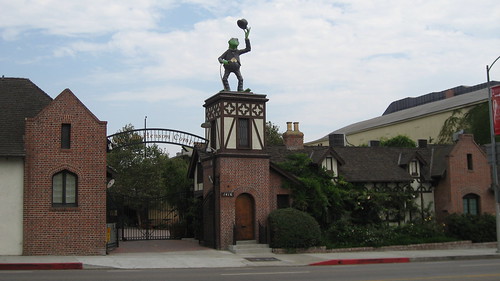
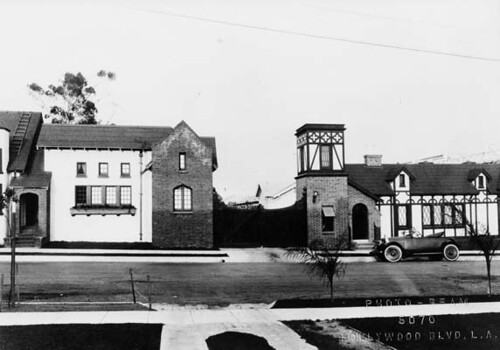
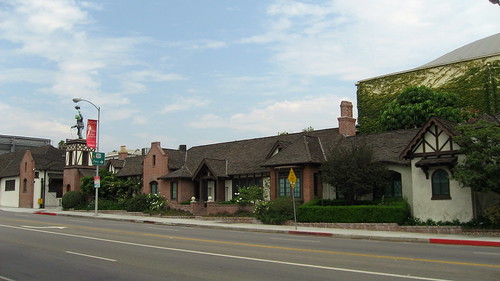
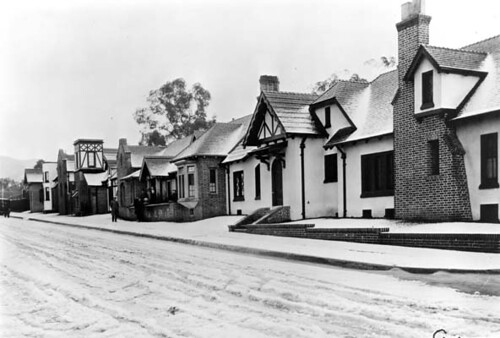
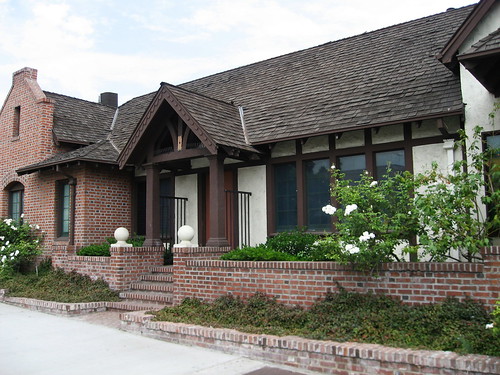
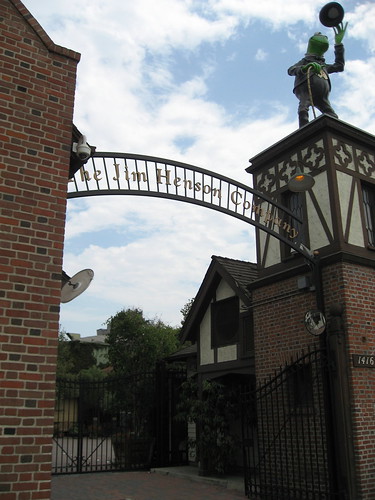
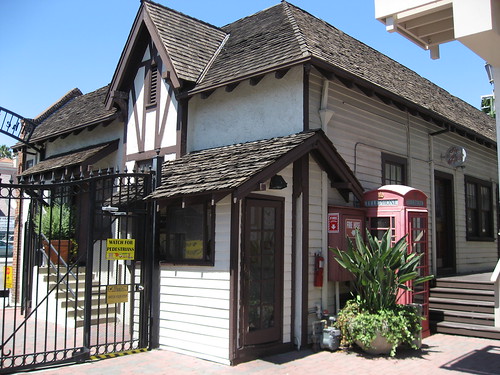
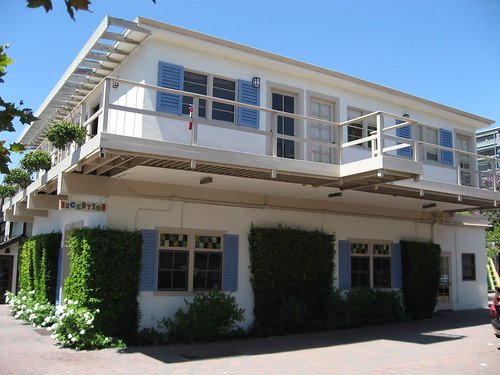
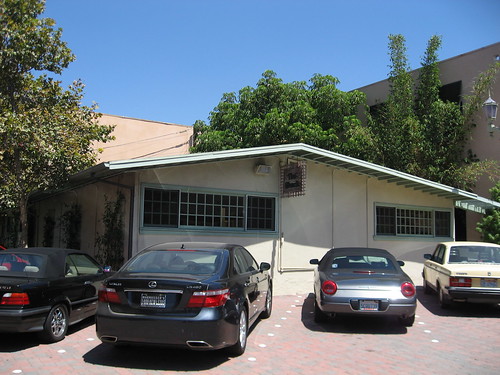
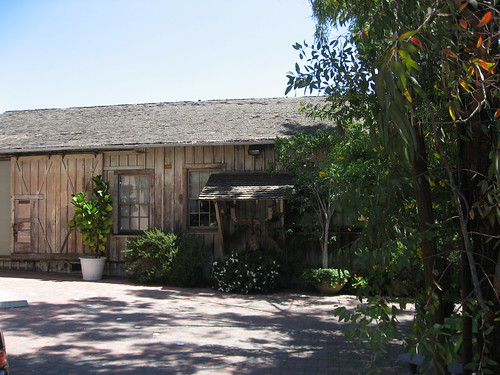
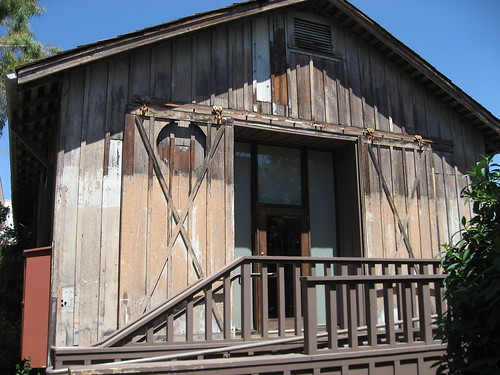
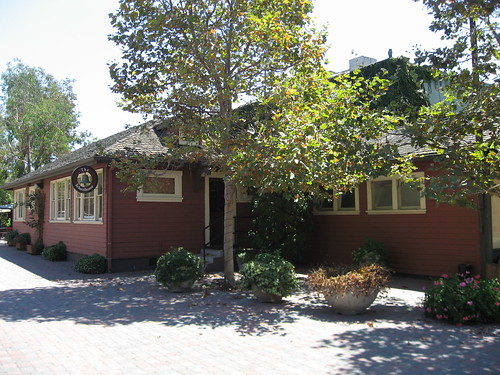
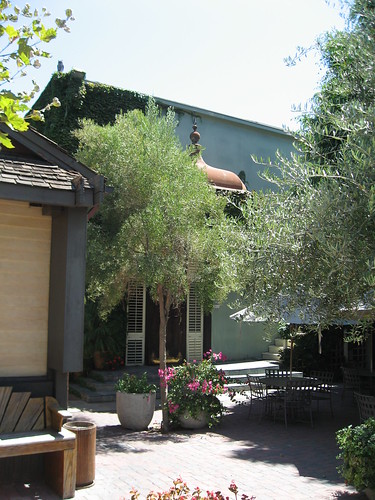
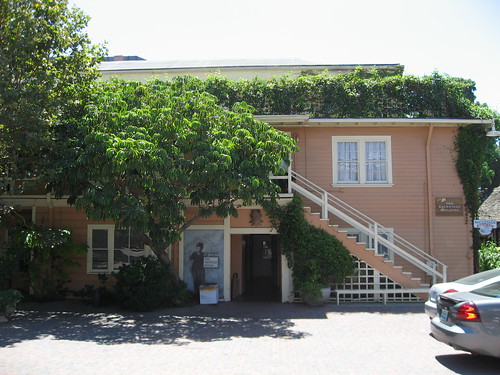
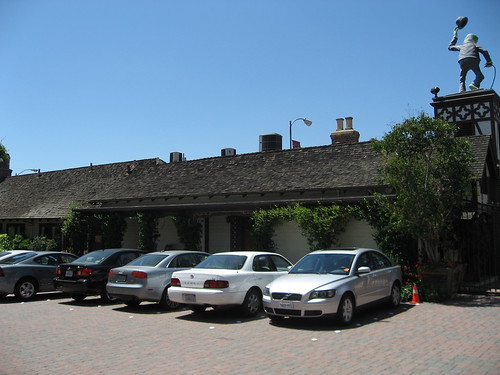

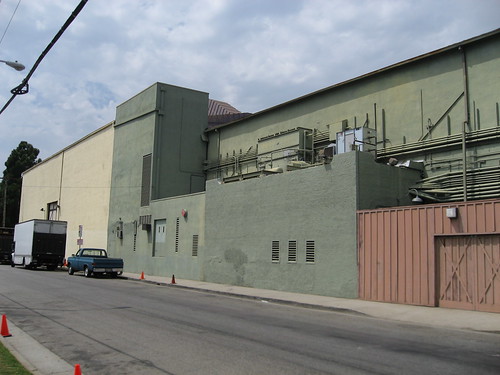
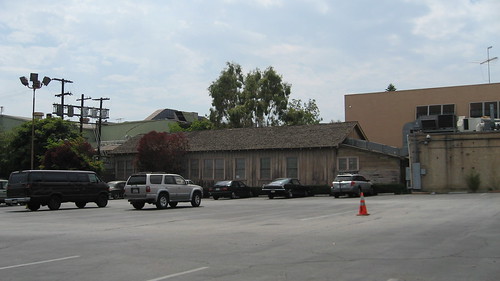
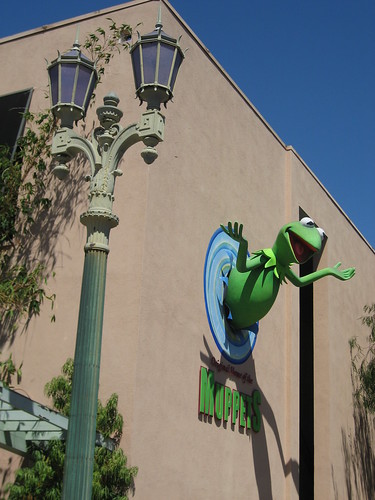

7 comments:
There was also a bit of controversy on the Cultural Heritage Commission when the Henson Company applied to install the Kermit-as-Chaplin statue on the front. The structure was already protected as a Historical Cultural Landmark (obviously), and some on the commission felt the giant frog would detract from the structure. It was finally approved, with some political shifting on the commission occurring shortly thereafter.
I could be wrong, but I think, like the Felix Chevrolet sign downtown, the Kermit statue is becoming a landmark in its own right. While on La Brea, I not only witnessed a couple of buses whose riders took pictures of him, but I was also asked to take a shot of a pair of tourists with Kermit in the background. I doubt if they knew if the site had anything to do with Chaplin or A&M.
Let me pass on some memories, not mine, but from an A&M pal -- "I remember the sign quite well, and I maybe it can be tracked down. It revolved, and when Polygram bought out Jerry and Herb, Jerry and Herb forced them to keep the sign up there for five years! You're correct, that one image is of the recording studios, where we recorded Joni Mitchell and the Carpenters and the Tubes...and we shot Soul Train there at the soundstage for a time...in front of the recording studio, where the picnic area, pink flowers and tree are now? That used to be the top four parking for whomever was in the studio -- Phil Ramone, Jimmy Iovine, that's where David Lee Roth was being 'taken care of' by a new friend he'd met at Crazy Girls across the street at six am one morning...in his convertible...by the way, the Historical Society would never have allowed us to paint those shutters BLUE. The carpenter's shop was just that til the late mid-late 90s, when the art dept moved in with partitions and cubicles, but not allowed to touch the existing structure inside or out as Chaplin had built it. What else...Chrissy Hynde heaving deli platters screaming 'Murderers!' and Stevie Nicks passing out and Brian Wilson once beat the hell out of that red phone booth." There you have it folks...moves are being made now to track down that sign, if it still exists! http://www.amcorner.com/features/feature_view.php?fetchtopic=25
Hey, thanks, Nathan, to you and your A&M pal. That link gave me trouble, but I toured the site by starting at AMCorner.com. Much appreciated.
Wonderful photos. I've been to the lot several times and was honored to have been filmed giving a tour of the studio. Just a few items of note; the Original Footprints of Charlie can be seen only faintly when you walk the perimeter of the building that was built over the site of the pool. He walked in the cement and his steps can be traced. The final imprint of both feet and his signature was taken out in 1962 when Red Skelton owned the compound. They have since been removed to a University that allowed the Henson Company to make a mold of them for inclusion to where the original once laid.
Thanks, Stan, for the footprints information.
Does anyone have any idea what ever happened to all the Chaplin props at the studio after Charlie was gone? Hats, canes, shoes, clothes? I am so curious where they all went. Were they labeled at the studio before being sent wherever they were sent? I have a cane I found in an antiques store that I am very curious about, with a teeny little yellow label on it with Charlie's name. You can barely see it. Why is it there and who put it there? Anybody know?
Post a Comment